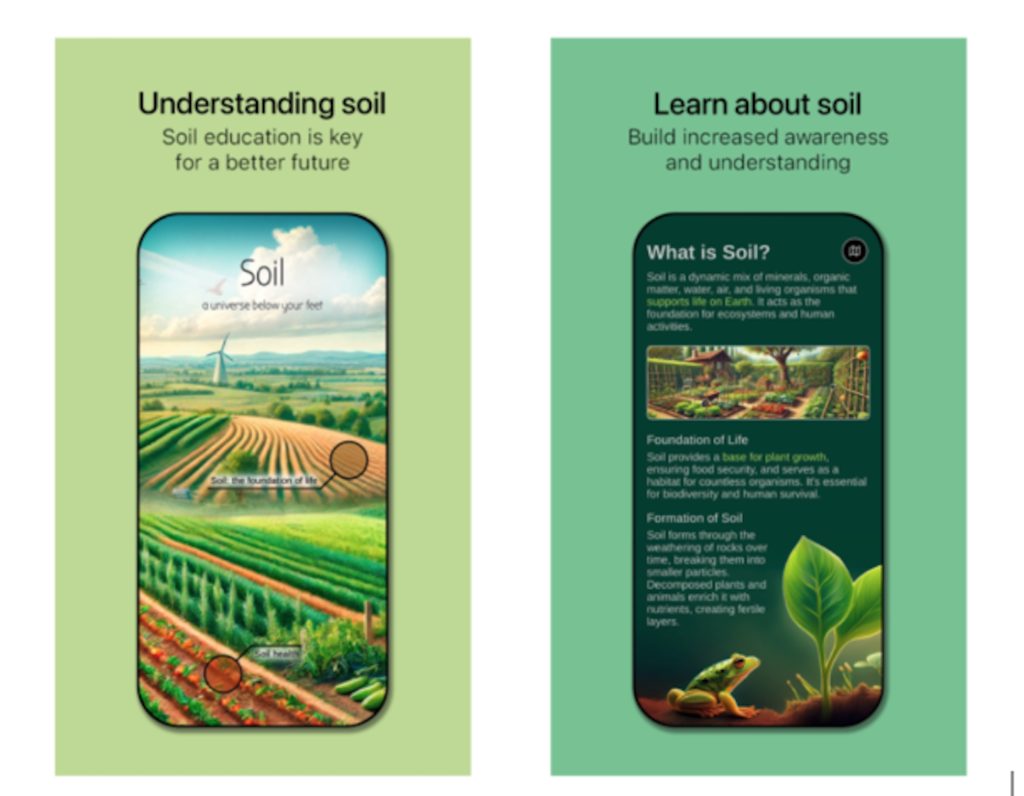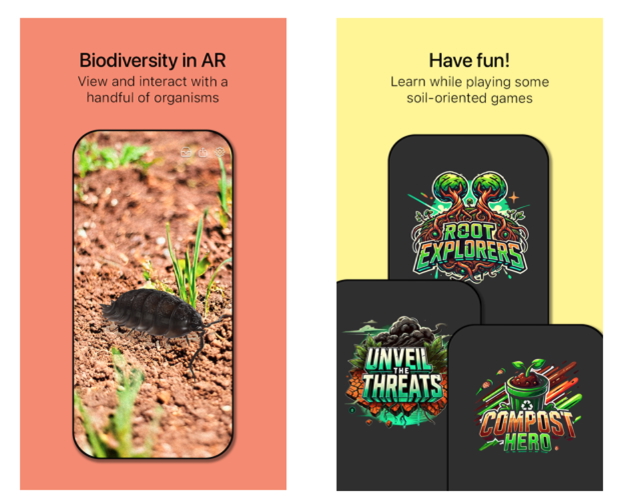The LOESS Soil App is the result of a unique European collaboration that brought together students, educators, and researchers to explore how digital tools can support environmental learning. Developed through a classroom-based co-creation process, the app was shaped not behind closed doors, but through direct input from young people across 15 countries. With guidance from teachers and project partners, students helped define its themes, structure, and interactive features, making the app a shared product of learning and creativity.

A European effort to support soil awareness
Part of the Horizon Europe LOESS project, the app supports the EU’s Mission Soil by helping users explore the importance of healthy soil and the environmental challenges it faces.
Covering five main topics – from soil biodiversity to sustainable practices – the app includes quizzes, mini-games, and an augmented reality feature where users can explore 3D soil organisms.
But what makes the LOESS Soil app notable is how it came to be: through a structured co-creation process involving students aged 12 and up, guided by teachers and LOESS partners in 15 participating countries.
A collaborative development approach
The app was developed over the course of the 2024/25 school year, following a seven-phase co-creation framework, led by the LOESS partner Justinmind, an expert in developing AR applications. Classrooms participating in the project explored soil topics through lessons, discussions, and digital tools, gradually building up to their own app concepts. From Sweden, pupils from Naturbruksgymnasiet, an upper secondary school focusing on agriculture and animal husbandry, on the island of Gotland participated.
The co-creation methodology was grounded in principles of Problem-Based Learning (PBL) and Inquiry-Based Learning (IBL), aiming to stimulate critical thinking and scientific curiosity in students. This approach allowed learners to connect environmental topics with digital design challenges in a way that was both structured and open-ended.
Students used the Justinmind no-code design platform to prototype their ideas, creating interactive mockups, user journeys, and visual layouts without needing to write code. Educators supported this work by facilitating brainstorming, guiding research, and helping students refine their designs.
Some of the core features, such as the augmented reality feature for exploring virtual soil organisms and a game based on the underground “Wood Wide Web”, were developed and enriched utilising ideas proposed by the students during the co-creation process.

Learning through participation
While the project was primarily about raising awareness of soil health, it also introduced students to the basics of digital design and environmental communication. By contributing to the app’s development, they had the chance to think critically about how scientific topics can be presented in engaging, user-friendly ways.
Educators played a central role in guiding the process, adapting materials to local needs and helping students navigate both the environmental content and the design tools.

A scalable model for turning classrooms into innovation labs
The LOESS co-creation model showed that it’s possible to involve students meaningfully in the development of educational materials. The approach encouraged collaboration, supported digital skill-building, and made space for creative input from a wide range of classrooms.
While the app was the final output, the process itself was just as important, providing a flexible way for schools to connect curriculum topics with practical, hands-on learning.
As a model, the LOESS methodology offers a blueprint for projects beyond soil health, adaptable to climate education, digital citizenship, or any field where youth engagement and creativity can drive impact.
The Soil app will be available in 14 European languages, including Swedish, and final Android and iOS versions will be available in the Apple Store and Google Play at the end of August 2025. Search “LOESS” in your app store.
